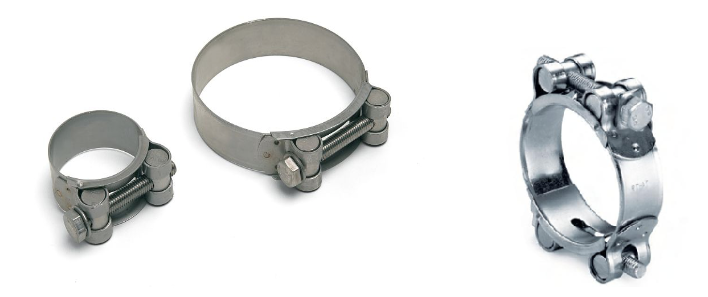When the piping to be connected is hefty and for heavy-duty use, or where clamps are to be used in demanding applications, hose clamps should be left to one side, and pipe clamps should be called upon instead.

Pipe clamps consist of a sturdy metal band of significant width. Welded onto this band are fixed clamping elements (threaded pawls) upon which mobile elements (nuts and bolts) operate.
The range of diameters on which the clamp can operate effectively is inevitably restricted to the sturdiness of the material and the metal band it is made from. Therefore, there is a good series of pipe clamps with very similar measurements so as to cover the broadest range of pipe diameters to be clamped.
Even when working pressures are not low and firm and safe clamping must be guaranteed, or when aggressive or potentially hazardous materials must be transported, pipe clamps are a good option. They are agile connecting and fixing systems that are not permanent.
They are used mainly in industrial settings for: sandblasting and shot peening machines; transportation of chemicals; the oil and marine industry; civil and industrial sewage and sludge; the transfer of synthetic granular materials; and the grain, flour and food industries.
In summary: hose clamps are used where tightening torques do not need to be particularly high and where a lightweight system with an agile and extensive size range may be beneficial.
On the other hand, pipe clamps have a reduced size range, but they are useful and necessary in the case of heavy-duty applications with much tighter clamping.





